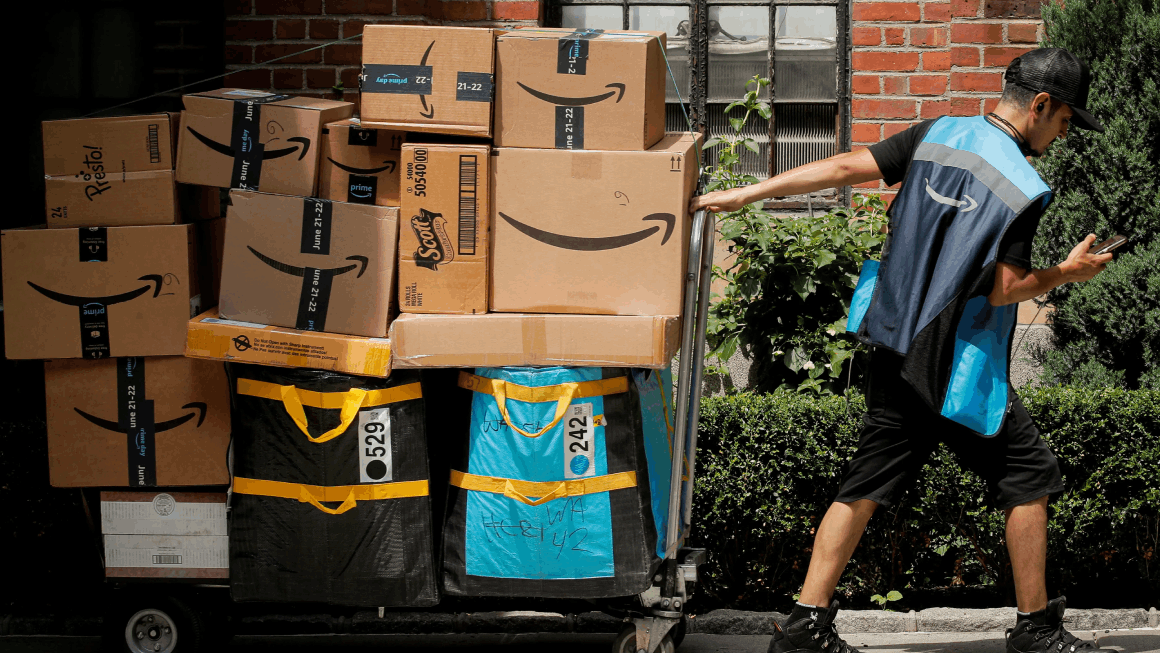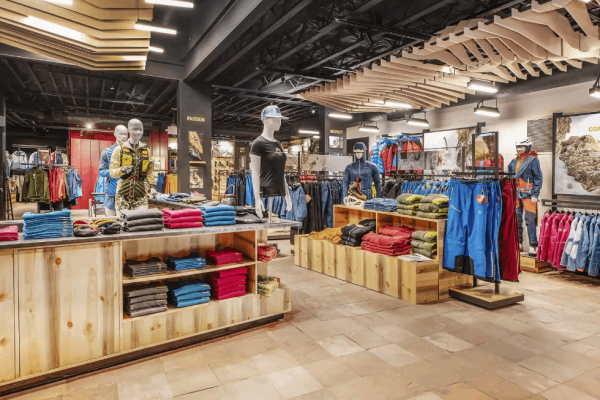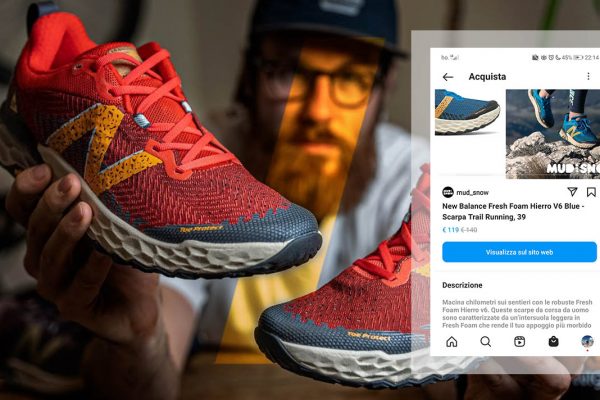As of now, Amazon is the largest e-commerce business globally. There are numerous compelling reasons why a brand should consider Amazon Vendor Central (1P) as a sales channel. While many articles discuss why Amazon is a potential business solution, positioning your catalogue on this digital giant can significantly expand your brand’s reach to a broader audience. If Amazon isn’t on your list, you’re likely missing a significant opportunity. You can find some well-explained reasons in these articles from Nuance Media, Neil Patel and eMarketer. This article focuses on the “how,” sharing five strategic drivers based on my direct experience that can help your brand succeed on Amazon Vendor Central without eroding sales volumes from other business channels.
A Wholesale Model with a Direct-to-Consumer Approach.
Starting a business on Amazon Vendor Central with a 1P model means working within a wholesale framework, selling your items to Amazon, which then sells directly to consumers. However, this comes with the challenge of losing control over your items, particularly pricing. Amazon often adjusts the recommended retail price (RRP) based on other digital accounts or retailers, a practice known as “validated pricing.” As a price matcher, Amazon’s algorithm will follow your distribution status. If you discount your digital channels, Amazon will follow suit. A cleaner distribution status increases your chances of success.
Rather than viewing Amazon purely as a wholesale customer, consider it a direct-to-consumer channel. This shift can make some challenges easier to tackle, even if the model remains wholesale.

Amazon 1P scheme, via Brian Beck.
1. Define a Clear Product Assortment
Initially, Amazon will ask you to open your entire catalogue for them, as any other retailer would. While this presents a great business opportunity, it also involves risks. As mentioned before, you lose control of your items and their pricing (if your distribution is not clean enough). Instead, define a clear product segmentation from your catalogue and focus on long-lasting carryovers with good stock coverage. Carryover products are advantageous because you can maintain a product page for years, accumulating many reviews. Not all products in your range are suitable for this channel: if you manage a brand, you might have entry-level, mid-range, and high-priced items. Your range may also differ in materials, categories, and other variables. Find the right mix and propose a segmentation to your product/sales team. When selecting items, consider the type of customer who might buy your item from Amazon:
- A customer with an Amazon Prime subscription who needs it quickly, perhaps in time for a race.
- A customer looking for the best price online.
- A customer who wants to compare your items with other brand choices (not very loyal).
- A customer who’s not your main target but might be interested in your products.
Avoid proposing your best-in-class items to enter the channel (like carbon-plate shoes, high-level material sunglasses, or expensive Gore-Tex jackets). Start with entry and mid-range items regarding pricing, materials, characteristics, and technology. As a next step, focus on product line expansion, adding dedicated SMUs (Special Make-Ups) for Amazon. “Special make-up” refers to items a brand manufactures specifically for a retailer. SMU orders typically have Minimum Order Quantity (MOQ) restrictions. This is a key milestone to improve your catalogue: if you manage to have SMU products with unique ASINs, not available to any other retailer, Amazon will not find any ASIN/SKU to price match online, decreasing the average discount on your products. It can be a dedicated colour of a style in your new collection.
During GTM (Go-to-Market) meetings, you can also propose a dedicated style to Amazon. Why not have an entry-level item to master the channel, making your brand available to a wider audience? (e.g., non-technical customers looking for an everyday jacket or shoes).
2. Match Demand and Stock to Fuel the Retailer.
As previously mentioned, you’re selling items to Amazon. You will start receiving purchase orders (POs) on Amazon Vendor Central based on your brand’s demand. Begin by estimating and understanding this demand for your product. Collaborate with your account (AVS) to forecast the quantity needed for the upcoming season or financial year. Additionally, work internally to ensure stock availability to meet this demand. Establish a monthly Forecast meeting with the Amazon team and your Planning team to address availability challenges and identify stock risks.
Stock availability can come from:
- Current season orders: Typically, orders are placed six months before the season starts, which is standard in the fashion and sports industries due to manufacturing lead times. The more accurately you place your orders (using sales data from Amazon), the better you can meet Amazon’s POs.
- Reorders from past seasons: Some stock is usually available in the “free stock” inventory portion if your planning team purchases additional items compared to orders entered by the sales team.
- Cancellations or returns from other retailers: Physical stores or digital accounts might cancel orders or request returns. This stock can supplement your initial estimation.
In the screenshot below, an example shows high demand and low stock availability: Amazon requested 154 units, but only 37 units were accepted by the brand/company.
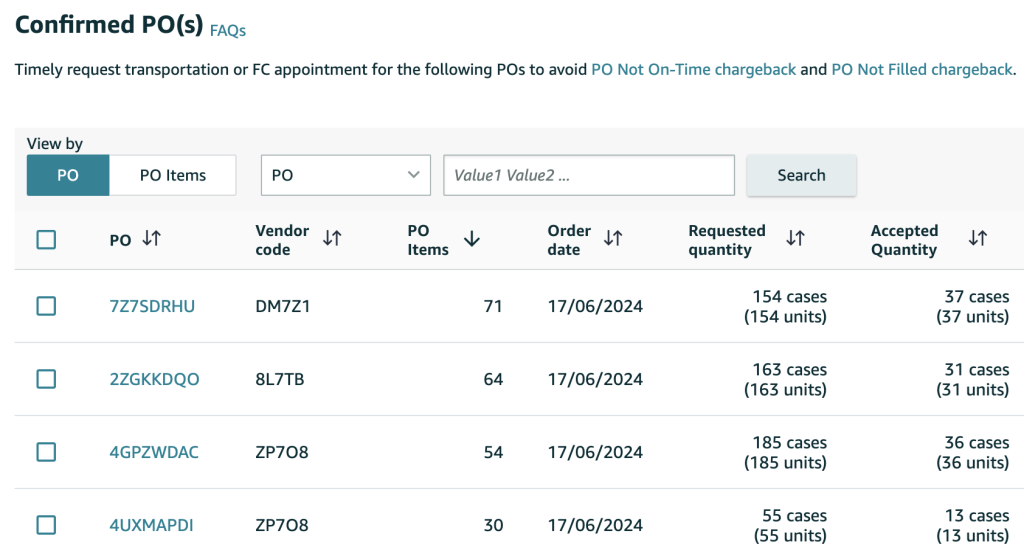
Improving your purchase order confirmation rate is crucial: it aids in negotiations with Amazon accounts and reflects overall business health. Aim for a confirmation rate of around 75%, as a general recommendation.

A fundamental tip: request your Amazon account to extend your delivery window to at least 14 days, which can provide additional time to fulfil shipments (as opposed to the standard 7-day window).
3. Optimize Customer Experience and Curate Content.
The previous two milestones (clear segmentation and stock availability) complete the sell-in process with Amazon as a wholesale customer. For the next steps, adopt a Direct-to-Consumer approach. Your goal is to equip Amazon with all the necessary tools to enhance the sell-out rate of your items, avoiding discounts as the only leverage. Focus on what’s best for the end customer (rather than just your wholesale customer, Amazon). Consider what the end customer is seeking, what motivates them to buy, and how you can assist in their decision-making.
Catalogue curation and customer experience are crucial. The Amazon Vendor platform provides many tools for this step. Start with the basics: product titles, descriptions, bullet points, images, and size charts are essential for creating a compelling product page. Most of this information is required to load the product using the VSSC file, also known as the “Flat File.” This Excel template includes mandatory and optional data for single SKU/ASINs.

This process is time-consuming: filling the flat file, correcting mistakes, and reloading products into Vendor Central until your items are online. However, it is fundamental: product copy and assets are necessary fields for listing your items (not only on Amazon but in most digital marketplaces as well).
Think from the end customer’s perspective: they want more details, more content, and more engagement. A+ content can be added directly from the Vendor Central platform. A+ content, found below the product Buy Box/Basket area, is where you can capture customer attention and interest. It features built-in formats you can utilize. Seek assistance from your marketing and communication team. Developing A+ content is akin to creating a landing page or a store window: it should captivate interest. Optimize images, correct any content flaws, and remember to update A+ content for new items added to the platform. Additionally, lifestyle images might be interesting to show your product in action. Read this article I wrote regarding the value of lifestyle images in your product detail page.
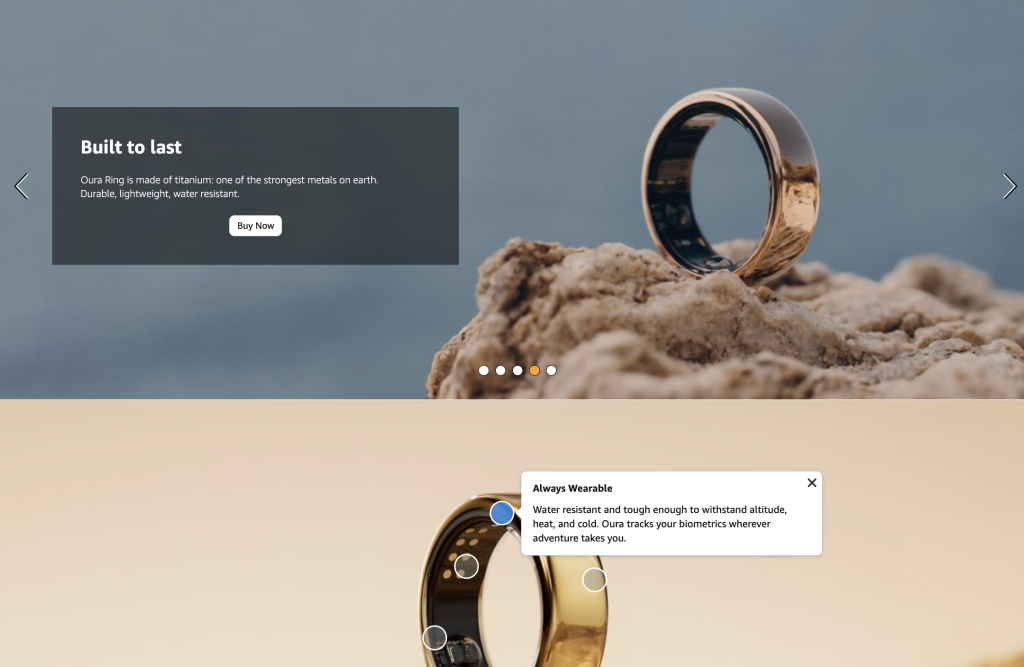
Product reviews are a powerful asset for your products. For new products with new ASIN codes, consider using the VINE program to gather reviews quickly. If you have the right product, you might reach new segments. Analyzing use cases can be enlightening when you broaden your catalogue’s audience. On Amazon, you may find customers using your products for different purposes than intended. Study these cases to understand how your products could address different needs beyond their core use. An example is below, with two reviews for a running shoe. The product is meant to be used for running on the road and instead, the two customers are people using the shoes for working shifts (nursing in the first one, maybe a barman/waiter in the second one).
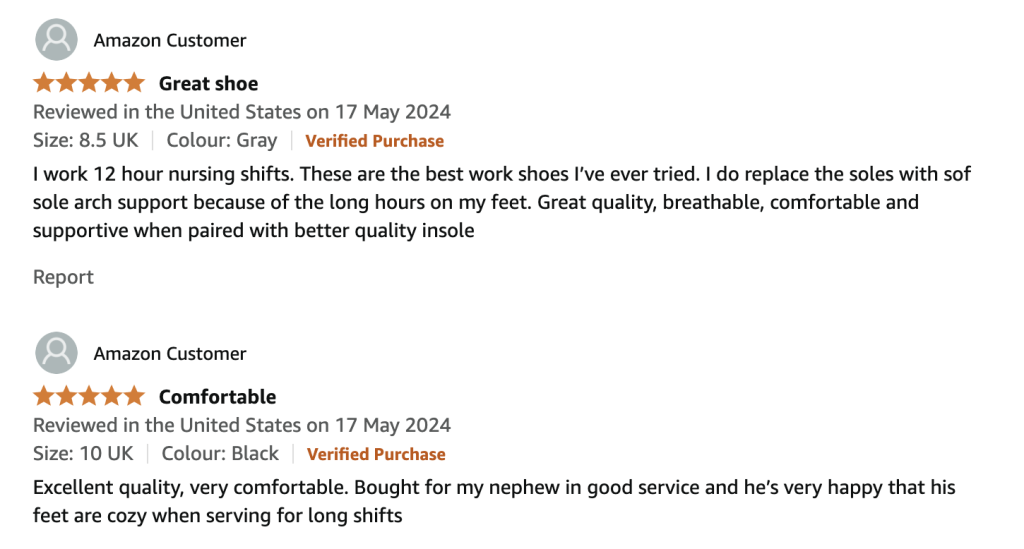
Optimizing your Brand store is another essential task. Consider examples like Oura. Some Amazon customers may not be familiar with your brand or USP (Unique Selling Proposition). Use your brand store to inform them about your brand, showcase new products, and highlight specific features and services. This content should connect customers with your brand values rather than just the products. If they resonate with your brand, they will start exploring your catalogue.
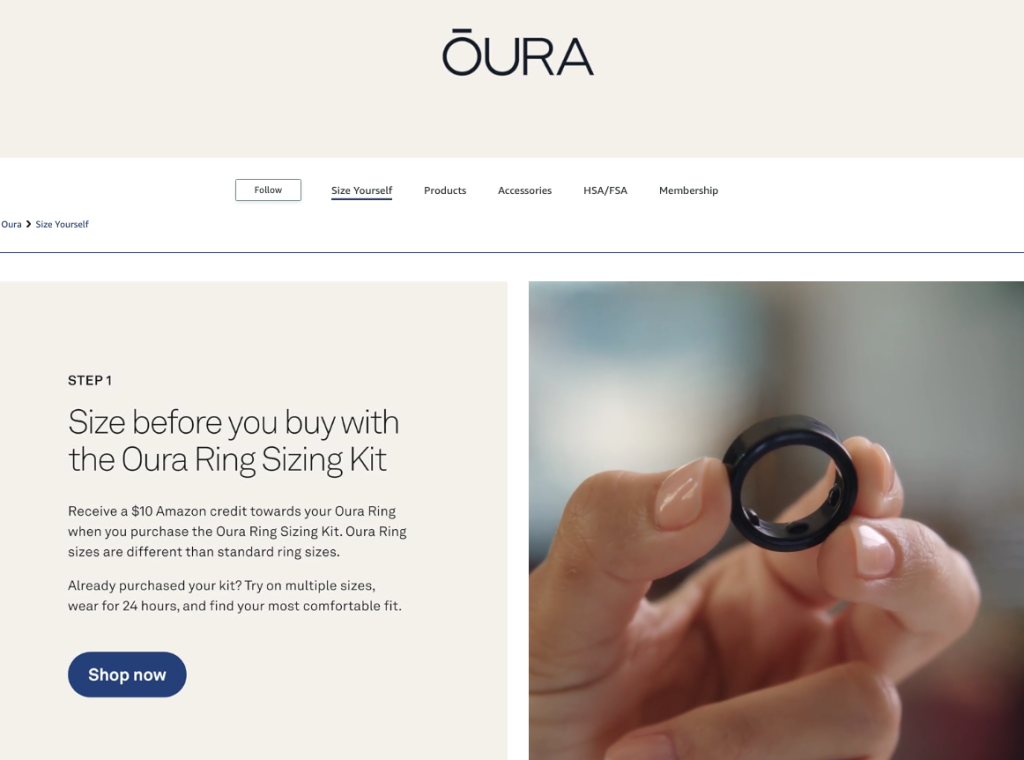
4. Increase Customer Acquisition and Reinforce Brand Positioning.
Driving traffic is crucial for increasing sales. To expand your business, you should attract new customers and raise awareness of your brand. Amazon’s platform offers a vast consumer base across multiple categories and price ranges. Compared to your brand’s e-commerce site, where customers are already interested in your products, Amazon’s diverse customer base can potentially be interested in your offerings, even if they don’t have an immediate need.
To leverage this large consumer base, stimulate brand “demand.” Introduce your brand to new platform customers, communicate your USP (Unique Selling Proposition), and highlight why they should choose your products. Enhance overall brand positioning by utilizing available tools:
Amazon Ads: Start with basic strategies, as testing and learning may vary by brand and product category. If managing ads in-house is challenging, consider hiring a digital marketing agency. Some ad formats are similar to Google Search Ads, while others resemble Display/Banner ads. Depending on your goals, Amazon provides various advertising options. Amazon Ads is only one of many digital advertising tools available. You can also consider to drive traffic from external sources (to Amazon pages).
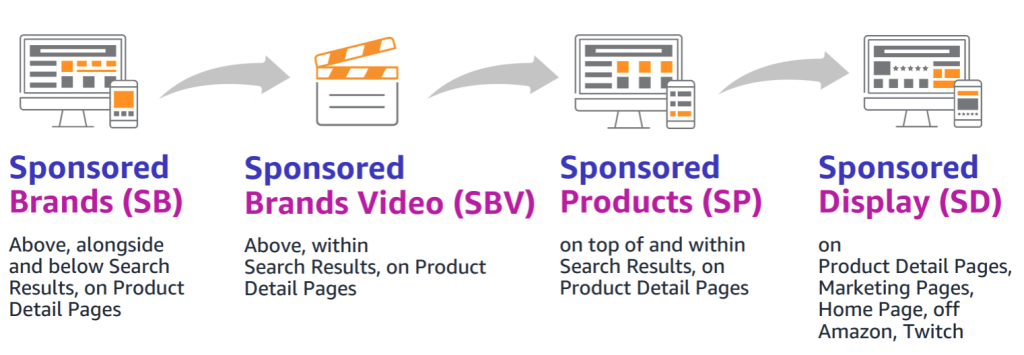
Deals: Master strategies for participating in Amazon Deals such as Prime Day, Sports Day, Spring Deal, Black Friday, and other ad hoc promotions with limited product selections. During these Deals, your products will be discounted. Carefully select which items to include in these promotions to avoid excessive discounting. Overall, Deals can help to increase your Sell Out percentage, see the example below with peaks of end customer purchases during the Deal weeks. As a consequence, if Amazon is short in stock after these periods and demand for your brand and products is high, Sell In or POs demand will increase as well.

Brand Activations: The brand store page is a tool for merchandising and presenting your catalogue. Use it to elevate your brand messages and strengthen your positioning. With the right assets, videos, and copy, convey your brand’s unique values, inspire customers, and build a deeper connection.
5. Business Relationship and Reporting.
Treat Amazon as a single wholesale account. Depending on your revenue volume, negotiating terms and ensuring compliance may require significant effort. Define critical agreements with your Amazon account, such as AVS, Marketing Coop, VINE, PICS, etc. Aim for the best terms possible, considering your business size, relationship with Vendor accounts, and brand potential.
Carefully monitor KPIs and set up regular reports. Traffic, sell-in, on-hand inventory, and sell-out are key KPIs. Master these metrics to manage demand, POs, shipments, and end-customer sales. Develop weekly and monthly reports based on your internal capabilities and tools.
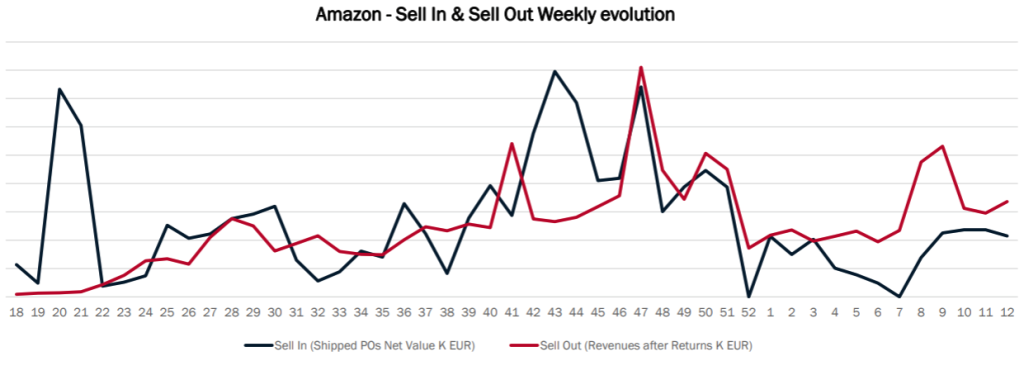
Request access to the AVID Dashboard, an Amazon tool based on QuickSight, for insights into sell-out, inventory, and traffic data. Ask your AVS to share reports on IDQ (catalogue situation), FCST risk (forecast risk), LBO, and other relevant data to manage your business effectively.

Actions after reading
If you need suggestions on Amazon Vendor (1P) business, please contact me. I’ll be glad to help. Email: andreafagandigital@gmail.com
Side notes, credits, sources
Articles: Brian Beck, Toolio.
Images: Oura on Amazon, screenshots from Vendor Central accounts.

